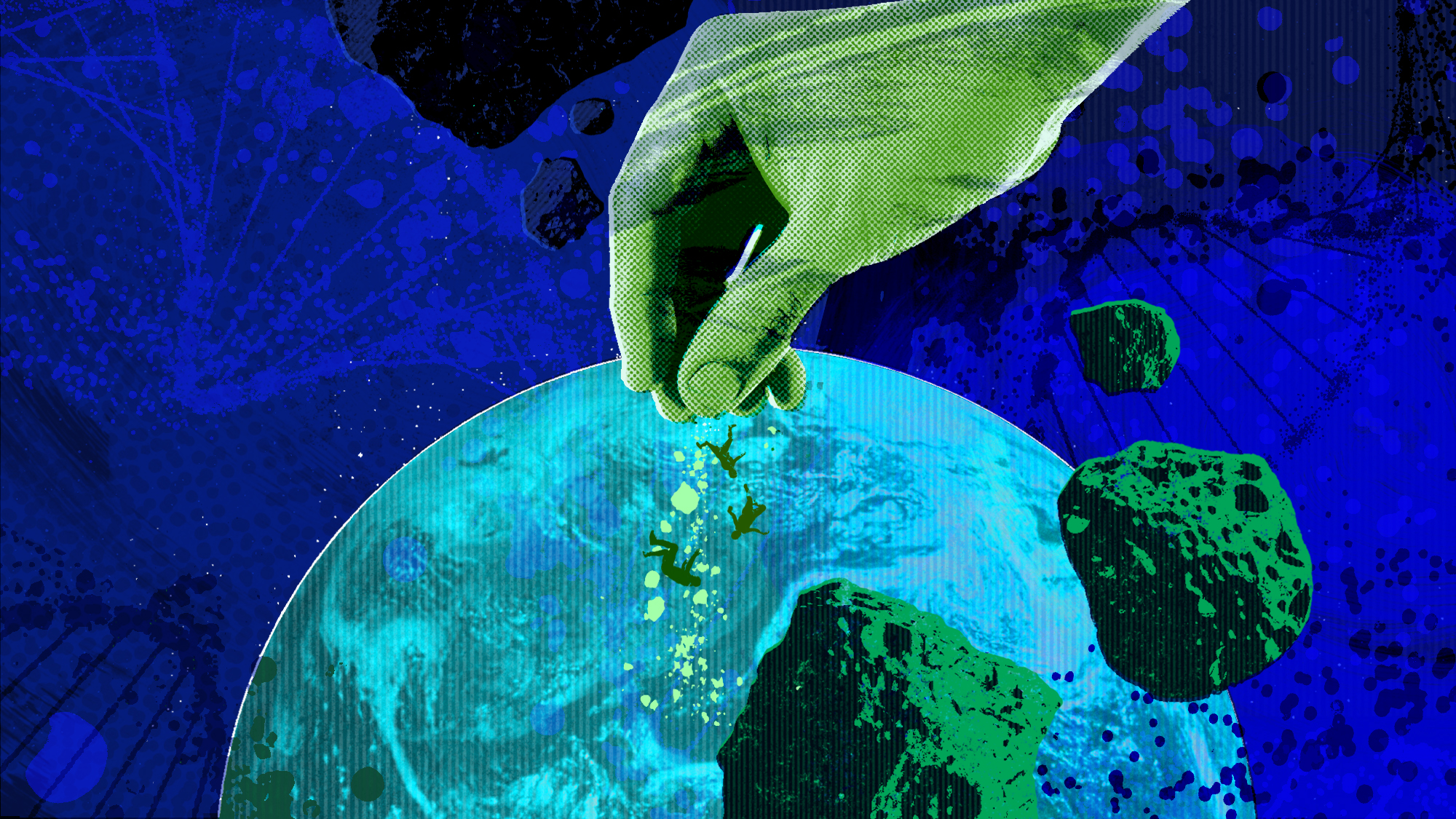Smart telescopes offer a 'transformative' experience for citizen scientists


Scott Kardel is seeing the night sky in a whole new way.
An astronomy professor at Palomar College in San Marcos, California, Kardel received his first telescope at 10, and has enjoyed stargazing ever since. At the start of the COVID-19 pandemic, Kardel bought a Unistellar smart telescope, which is operated through a smartphone app. It has an electronic eyepiece that delivers more precise images, and compared to a traditional telescope, "It is just transformative," Kardel told The Week.
During remote learning, Kardel would connect to Zoom and show his students what he was observing through the telescope from his backyard. "They could talk to me and interact and ask questions," Kardel said. "It was quite amazing." Being able to share live views of the sky with people at their own homes was "something I never imagined you could do with a telescope," he added. "It opens up all kinds of new opportunities for teaching."
The Week
Escape your echo chamber. Get the facts behind the news, plus analysis from multiple perspectives.

Sign up for The Week's Free Newsletters
From our morning news briefing to a weekly Good News Newsletter, get the best of The Week delivered directly to your inbox.
From our morning news briefing to a weekly Good News Newsletter, get the best of The Week delivered directly to your inbox.
It also makes it easier for amateur astronomers to turn into citizen scientists. Unistellar users can collect astronomical data and submit it to the SETI Institute, which then takes these scientific observations and analyzes them. In September, Kardel and several other Unistellar users from around the world observed and tracked the Dimorphos asteroid before, during, and after it was hit by NASA's Double Asteroid Redirection Test (DART) spacecraft. The SETI Institute used their observations to measure the mass of dust that came off Dimorphos after DART slammed into it, and confirmed the asteroid was nudged enough to change its orbit.
Kardel and 30 other citizen scientists are listed as co-authors of the research paper "Light Curves and Colors of the Ejecta from Dimorphos after the DART Impact," recently published in Nature. To be named in such a prestigious journal is "pretty exciting," Kardel said, and he thinks getting more people involved in science "at any level is a good thing. It's important for an individual to contribute something that makes you feel good about yourself and also contribute to the general understanding of asteroids and comets and exploding stars."
A free daily email with the biggest news stories of the day – and the best features from TheWeek.com
Catherine Garcia has worked as a senior writer at The Week since 2014. Her writing and reporting have appeared in Entertainment Weekly, The New York Times, Wirecutter, NBC News and "The Book of Jezebel," among others. She's a graduate of the University of Redlands and the Columbia University Graduate School of Journalism.
-
 Blue Origin launches Mars probes in NASA debut
Blue Origin launches Mars probes in NASA debutSpeed Read The New Glenn rocket is carrying small twin spacecraft toward Mars as part of NASA’s Escapade mission
-
 ‘The Big Crunch’: why science is divided over the future of the universe
‘The Big Crunch’: why science is divided over the future of the universeThe Explainer New study upends the prevailing theory about dark matter and says it is weakening
-
 Dinosaurs were thriving before asteroid, study finds
Dinosaurs were thriving before asteroid, study findsSpeed Read The dinosaurs would not have gone extinct if not for the asteroid
-
 The moon is rusting
The moon is rustingUnder the radar The Earth is likely to blame
-
 Panspermia: the theory that life was sent to Earth by aliens
Panspermia: the theory that life was sent to Earth by aliensUnder The Radar New findings have resurfaced an old, controversial idea
-
 Africa could become the next frontier for space programs
Africa could become the next frontier for space programsThe Explainer China and the US are both working on space applications for Africa
-
 SpaceX breaks Starship losing streak in 10th test
SpaceX breaks Starship losing streak in 10th testspeed read The Starship rocket's test flight was largely successful, deploying eight dummy satellites during its hour in space
-
 Hurricanes are not exclusive to Earth. They can happen in space.
Hurricanes are not exclusive to Earth. They can happen in space.Under the radar These storms may cause navigational problems



